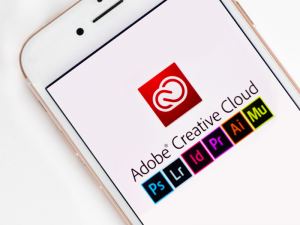How to Discover Your Target Audience
Whether you are selling a product or a service, it’s intended for a specific group of customers, or a target market. But do you understand anything about that group of people? This where a target audience comes, which defines that group of people. A target audience is a group of consumers characterized by behaviors and specific demographics, and knowing your target audience can help to influence decision making for a marketing strategy. Finding your target audience takes a lot of work and research so that you can figure out who exactly you want to reach. Below, we have some tips on how to find your target audience.
Understanding the Customer's Journey
It’s really easy to look at customers as a way to bring in revenue, which is a great misunderstanding of who they are and why are engaging with you. Every customer goes through a purchasing journey, and marketers and business owners desperately need to understand this journey. Never assume that you know what each customer needs! Spend the time and effort to understand what each customer faces when making a purchasing journey so that you can improve. Below, we have some considerations for marketers and business owners who are trying to understand their customer’s journeys.
Why LinkedIn is the Most Trusted Social Media Platform for B2B Marketers
With all of the social media platforms available to everyone in 2020, it can be hard for businesses (especially in the B2B sector) to find a way to break through the mold. Because there’s an oversaturation of businesses vying for the attention of their customers and new lead, B2B marketers have to know exactly where to invest their time and energy. B2B marketing involves three social platforms: Facebook, Twitter, and LinkedIn. But are all of these platforms a great fit for your B2B marketing efforts? For B2B marketers, LinkedIn is by far the most trusted channel. Below, we have a few reasons why you should trust LinkedIn as your social media platform in 2020.
4 Benefits of Email Marketing in Omnichannel Marketing
In an omnichannel marketing approach, it’s all about creating a personalized and consistent customer experience, no matter what platform they are using to engage with your brand. This means that the experience should be consistent across all channels: social media, customer service, website, brick and mortar, and email campaigns. Email campaigns are especially important because they are at the center of your customer’s digital life and can drive the highest ROI among other digital communication channels. Below, we’ve got four benefits of email marketing in an omnichannel marketing approach.
What is Omnichannel Marketing?
Marketing has undergone some vast changes in the past few years, and it will only continue to change in the future. Lately, marketers have dropped the mass marketing campaigns in favor of a much more personalized approach. If you are planning on truly engaging with all of your customers and potential leads, you have to be everywhere. The only way for this to happen and be effective is an omnichannel marketing approach. But what exactly does that mean? The omnichannel marketing experience is where consumers can engage with a company on all points; through a brick and mortar store, a website, a mobile app, a catalog, or social media. Additionally, they can access the products and services by calling the company phone, using a mobile app, or even connecting through a personal computer or tablet. If you’re looking to build an omnichannel marketing approach, there are a few things to take into consideration.
What is Advocacy Marketing?
Take a moment to think back to a time when you purchased a product that you were really satisfied with. Did you tell your friends and family? Did you post something on social media? Advocacy marketing is an inexpensive yet effective marketing tactic, wherein the brand is equipping customers to generate interest in your brand through social media, reviews, and word-of-mouth. Brands can empower and equip their customers to be powerful marketing tools for their products. But how do is advocacy marketing set up? Below, we have a few things to consider when you’re developing your advocacy marketing strategies.
How to Build a Product Ecosystem
When you hear the word ecosystem, what’s the first thing that comes to mind? Probably a frozen tundra or even a rainforest, which wouldn’t be surprising! Ecosystems work in a very specific way, wherein the biotic and abiotic components of any particular ecosystem work together to survive. Product ecosystems are not so different! A company creates a product ecosystem when they have several products that coexist to benefit the customer. Apple and Adobe are excellent examples of companies that have created thriving product ecosystems. But how is a successful product ecosystem built? Below, we have a few pointers for any companies that are attempting to establish their product ecosystem.
How to Grow Your Business Using Thought Leadership
Thought leadership can be an incredible way to build grow your business and build your brand. Thought leaders are seen as industry superstars, a sort of shining example of how to run a company. They are trust-worthy and reliable, and any input they have on their industry is taken very seriously. Positioning yourself as a thought leader is easier said than done. If you’re looking to grow your business through thought leadership, there are a few things to keep in mind.
Marketing Strategies That Will Reach Gen Z
Now that we’re in 2020, it’s time to start thinking about the next generation of consumers: Generation Z. Born between 1994 and 2014, Gen Z will soon be flooding the market and the workplace. As the first generation to have immediate access to technology for most of their lives, marketers have to completely rethink their approach. If we want to tap into this new audience, we need to understand what they care about, how they consume information, and how to close the deal.










